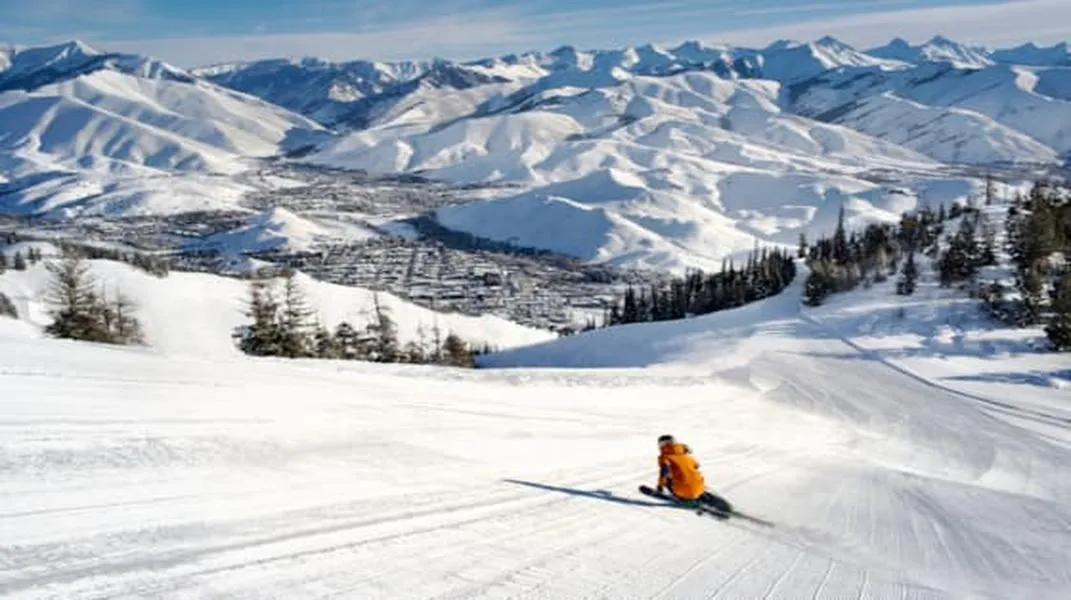Discovering Coconino National Forest: A Natural Wonderland
Nestled in the heart of northern Arizona, Coconino National Forest is a captivating display of nature's artistry, where towering pines, vibrant red rock formations, and a diverse range of wildlife come together to create a breathtaking landscape. Spanning over

Overview of Coconino National Forest
Coconino National Forest was established in 1908 and is part of the larger Coconino National Forest Service area. The forest is located in close proximity to the city of Flagstaff, making it easily accessible for day trips and extended stays. Its unique geography includes the San Francisco Peaks, the highest point in Arizona, and the iconic red rock formations of Sedona, drawing visitors from around the world.
Key Features
1. Diverse Ecosystems: The forest is home to a remarkable variety of ecosystems, including high-elevation ponderosa pine forests, mixed conifer forests, and desert scrubland. This diversity supports a wide range of flora and fauna, making it a vital area for conservation and ecological studies.
2. Scenic Vistas: The iconic landscapes of Coconino National Forest feature stunning cliffs, deep canyons, and expansive meadows. The San Francisco Peaks, which rise to over 12,600 feet, offer some of the most breathtaking views in the region, particularly from the scenic overlooks along the Forest Road 420.
3. Recreational Opportunities: Coconino National Forest is a paradise for outdoor enthusiasts, offering an array of recreational activities year-round. Hiking, mountain biking, camping, fishing, and wildlife watching are just a few of the activities that attract visitors to this natural haven.
4. Cultural Heritage: The area is rich in cultural history, with evidence of ancient Native American civilizations, such as the Sinagua, who inhabited the region for thousands of years. Visitors can explore archaeological sites, rock art, and historic structures that provide insight into the lives of these early inhabitants.
Preparing for Your Visit
To make the most of your experience at Coconino National Forest, it’s essential to plan ahead and come prepared. Below is a comprehensive guide on what to bring and how to prepare for your adventure.
Essential Gear
1. Clothing: The weather in Coconino National Forest can vary greatly depending on the season and elevation. Layering is key; pack moisture-wicking base layers, insulating mid-layers, and a waterproof outer shell. A wide-brimmed hat and sunglasses are also recommended for sun protection.
2. Footwear: Invest in a good pair of hiking boots or shoes that provide support and traction. If you plan to engage in activities like mountain biking or horseback riding, make sure to wear appropriate footwear for those sports.
3. Backpack: A comfortable daypack will allow you to carry your essentials while exploring the forest. Look for one with adequate padding, adjustable straps, and enough capacity for your gear.
4. Navigation Tools: While many trails are well-marked, it’s wise to carry a detailed map of the area and a compass or GPS device. Mobile phone reception can be spotty in remote areas, so having a physical map is crucial.
5. Hydration: Staying hydrated is vital, especially in the dry climate of Arizona. Bring a refillable water bottle or hydration reservoir, and be sure to carry extra water, particularly on longer hikes.
6. Food: Pack high-energy snacks like trail mix, energy bars, and jerky. If you plan on having a picnic, consider bringing a portable stove or grill for cooking.
7. First Aid Kit: Accidents can happen, so a basic first aid kit is a must. Include items such as band-aids, antiseptic wipes, tweezers, and any personal medications.
8. Camping Gear: If you plan to camp, you’ll need a tent, sleeping bag, and sleeping pad. Choose a tent that is suitable for the season and weather conditions.
9. Wildlife Safety: Familiarize yourself with local wildlife, including bears and mountain lions. Carry bear spray and know how to use it, especially if you’ll be camping or hiking in remote areas.
10. Camera and Binoculars: The stunning landscapes and diverse wildlife are worth capturing. A good camera and binoculars will enhance your experience and allow you to observe the forest’s inhabitants up close.
Planning Your Itinerary
Before you set out, consider how much time you have and what activities you want to prioritize. Here’s a suggested itinerary for a weekend visit:
Day 1: Arrival and Exploration
- Morning: Arrive at the Coconino National Forest visitor center to gather maps and information. The visitor center staff can provide insights into current trail conditions and points of interest.
- Afternoon: Head to the Oak Creek Canyon for a leisurely hike. The West Fork Trail is a popular choice, offering stunning views of the canyon walls and a cool creek to explore. The trail is approximately 3.5 miles long and is suitable for most skill levels.
- Evening: Set up camp at one of the designated campgrounds, such as Cedar Flat Campground. Enjoy a campfire (if allowed) while soaking in the tranquility of the forest.
Day 2: Hiking and Sightseeing
- Morning: After breakfast, embark on a hike to the San Francisco Peaks. The Humphreys Peak Trail is a challenging but rewarding trek that leads to the highest point in Arizona. The round trip is approximately 10 miles and offers panoramic views of the surrounding area.
- Afternoon: After your hike, take a scenic drive along the Scenic Loop Drive, stopping at overlooks to take in the stunning vistas. Don’t miss the chance to explore the Red Rock Scenic Byway for iconic views of Sedona’s red rock formations.
- Evening: Return to your campsite for dinner. As night falls, enjoy stargazing in the clear Arizona skies, as Coconino National Forest is designated as a Dark Sky Area.
Day 3: Relaxation and Departure
- Morning: Enjoy a leisurely breakfast and take a short stroll around your campsite. If time permits, visit Walnut Canyon National Monument, which showcases ancient cliff dwellings and hiking trails.
- Afternoon: Pack up your campsite and reflect on your experiences as you head back home.
Tips for a Safe and Enjoyable Visit
1. Leave No Trace: Follow the principles of Leave No Trace to minimize your impact on the environment. Pack out all trash, stay on designated trails, and respect wildlife.
2. Check Weather Conditions: Weather in the forest can change rapidly. Before your visit, check the forecast and be prepared for sudden changes in temperature or precipitation.
3. Know Your Limits: Be mindful of your physical abilities and choose activities that align with your fitness level. If you’re new to hiking or outdoor activities, consider starting with easier trails.
4. Wildlife Encounters: Observe wildlife from a safe distance. Do not feed or approach animals, and be aware of your surroundings, especially when hiking in areas known for wildlife activity.
5. Fire Safety: If you plan to have a campfire, make sure to follow all fire regulations and guidelines. Only use designated fire rings, and ensure that your fire is completely extinguished before leaving the area.
Conclusion
Coconino National Forest is a treasure trove of natural beauty and adventure. From its diverse ecosystems and scenic vistas to its rich cultural history, the forest offers something for everyone. With thoughtful preparation and a spirit of adventure, your visit to Coconino National Forest will be an unforgettable experience, allowing you to connect with nature in one of Arizona's most stunning landscapes. Whether you are seeking solitude in the wilderness or thrilling outdoor activities, Coconino National Forest invites you to explore, discover, and create lasting memories.
This HTML structure now includes appropriate `` and `
` tags to organize the content effectively.




